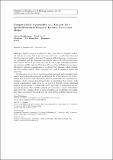Files in this item
Computational approaches and analysis for a spatio-structural-temporal invasive carcinoma model
Item metadata
| dc.contributor.author | Hodgkinson, Arran | |
| dc.contributor.author | Chaplain, Mark Andrew Joseph | |
| dc.contributor.author | Domschke, Pia | |
| dc.contributor.author | Trucu, Dumitru | |
| dc.date.accessioned | 2019-03-02T00:37:27Z | |
| dc.date.available | 2019-03-02T00:37:27Z | |
| dc.date.issued | 2018-04 | |
| dc.identifier | 252047094 | |
| dc.identifier | 48269cba-73ff-4b4c-aa49-64ea839d6560 | |
| dc.identifier | 85044341233 | |
| dc.identifier | 000428067300001 | |
| dc.identifier.citation | Hodgkinson , A , Chaplain , M A J , Domschke , P & Trucu , D 2018 , ' Computational approaches and analysis for a spatio-structural-temporal invasive carcinoma model ' , Bulletin of Mathematical Biology , vol. 80 , no. 4 , pp. 701-737 . https://doi.org/10.1007/s11538-018-0396-4 | en |
| dc.identifier.issn | 0092-8240 | |
| dc.identifier.other | ORCID: /0000-0001-5727-2160/work/55378859 | |
| dc.identifier.uri | https://hdl.handle.net/10023/17200 | |
| dc.description.abstract | Spatio-temporal models have long been used to describe biological systems of cancer, but it has not been until very recently that increased attention has been paid to structural dynamics of the interaction between cancer populations and the molecular mechanisms associated with local invasion. One system that is of particular interest is that of the urokinase plasminogen activator (uPA) wherein uPA binds uPA receptors on the cancer cell surface, allowing plasminogen to be cleaved into plasmin, which degrades the extracellular matrix and this way leads to enhanced cancer cell migration. In this paper, we develop a novel numerical approach and associated analysis for spatio-structuro-temporal modelling of the uPA system for up to two-spatial and two-structural dimensions. This is accompanied by analytical exploration of the numerical techniques used in simulating this system, with special consideration being given to the proof of stability within numerical regimes encapsulating a central differences approach to approximating numerical gradients. The stability analysis performed here reveals instabilities induced by the coupling of the structural binding and proliferative processes. The numerical results expound how the uPA system aids the tumour in invading the local stroma, whilst the inhibitor to this system may impede this behaviour and encourage a more sporadic pattern of invasion. | |
| dc.format.extent | 39967463 | |
| dc.language.iso | eng | |
| dc.relation.ispartof | Bulletin of Mathematical Biology | en |
| dc.subject | Cancer invasion | en |
| dc.subject | Structured cell population dynamics | en |
| dc.subject | Computational modelling | en |
| dc.subject | QA Mathematics | en |
| dc.subject | QH301 Biology | en |
| dc.subject | RC0254 Neoplasms. Tumors. Oncology (including Cancer) | en |
| dc.subject | NDAS | en |
| dc.subject | SDG 3 - Good Health and Well-being | en |
| dc.subject.lcc | QA | en |
| dc.subject.lcc | QH301 | en |
| dc.subject.lcc | RC0254 | en |
| dc.title | Computational approaches and analysis for a spatio-structural-temporal invasive carcinoma model | en |
| dc.type | Journal article | en |
| dc.contributor.institution | University of St Andrews. Applied Mathematics | en |
| dc.identifier.doi | 10.1007/s11538-018-0396-4 | |
| dc.description.status | Peer reviewed | en |
| dc.date.embargoedUntil | 2019-03-02 |
This item appears in the following Collection(s)
Items in the St Andrews Research Repository are protected by copyright, with all rights reserved, unless otherwise indicated.

